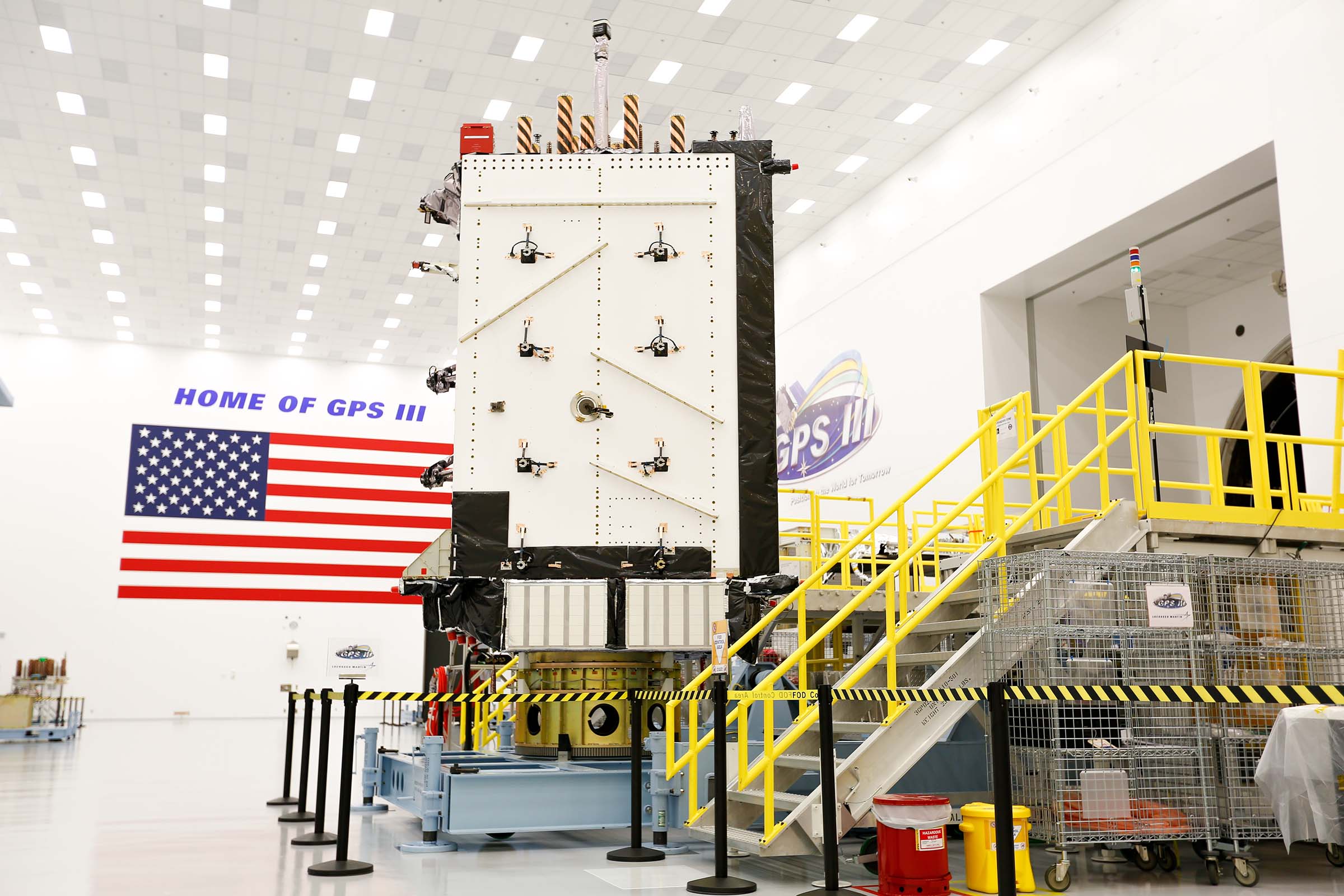
Lockheed Martin announced Tuesday the Air Force has given its GPS III satellites the final thumbs up, declaring it “available for launch.”
The first GPS III satellite vehicle is expected to launch in 2018. According to Lock?heed, it has three times the accuracy, eight times the “improved anti-jamming capability,” and a production empire comprising more than 250 subcontractors spanning 29 states. Most significant to the average American may be the new civil signal code that’ll accompany the satellites, “improving connectivity worldwide,” according to the release. Consumers around the globe use this signal billions of times each second. GPS III also offers an open architecture to Lockheed?, allowing it to be more easily modified as the mission adapts in ensuing years.
“As we designed GPS III, we knew that mission needs would change in the future and that new technology will become available. We wanted the satellite to be flexible to adapt to those changes,” said Mark Stewart, Lockheed’s vice president of the navigation systems mission area. “To do that, we intentionally developed GPS III with a modular design. This allows us to easily insert new technology into our production line.”
Lockheed also announced in late September its GPS III prototype “reached a major milestone” in successfully collaborating with the operational control system (OC-X), the ground component of the GPS constellation. The development of the next generation OC-X has seen a troubled past for its prime contractor Raytheon, against whom the Air Force declared a Nunn-McCurdy breach in 2016. However, Lockheed’s September announcement—coming a month after USAF gave it access to the code it would need to develop such collaboration—is another sign the Air Force is taking steps to remediate the schedule delays and cost overruns produced by Raytheon.
The first 10 GPS III satellites are already in full production, and “all major development risks” are considered past.
United Launch Alliance launched the twelfth and final GPS IIF satellite into orbit in February 2016, but the GPS program itself traces its roots back to the Cold War, about which you can read more the history of the GPS program, from the May issue of Air Force Magazine.